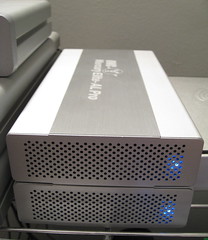Both internal and external hard drives share a common function of storing data. Both have ample amounts of storage for all your needs. You can store just about anything in both of them. While their names indicate a lot, more can be discussed about their differences. But what you must understand is that internal storage is a given in devices such as computers and smartphones. Without it, such a device simply wouldn’t function.
 Simply put, internal storage is the main storage for permanent files – files that you want to keep for long. External storage is more of complement storage for your already existing storage. To shed more light on this matter, let’s discuss the differences of each.
Simply put, internal storage is the main storage for permanent files – files that you want to keep for long. External storage is more of complement storage for your already existing storage. To shed more light on this matter, let’s discuss the differences of each.
If you haven’t already noticed, their names give away their location which is their main difference. An internal hard drive is built within the computer. An external hard drive is not. You need to connect it to the computer using a cable to have access to it.
The main difference between an internal hard drive and an external hard drive is location. While internal hard drives are built-in to your desktop computer or laptop, external drives are not. All computers need an internal drive to operate. Within the drive, files, data and media are stored. While you can physically remove a computer’s internal drive, there is really no point to unless you wanted to replace it with a more powerful drive. External drives are portable and — with the right cables — can be connected to numerous computers, allowing you to take your files, data or media with you at all times.
(Via:https://www.techwalla.com/articles/what-is-the-difference-between-internal-external-hard-drives)
As mentioned, internal storage is the principal storage for all your computer files and other data. Whenever you download information or any type of data, it is automatically saved in your internal storage, even if you have a USB or memory card attached to your computer unless you change the settings. And for good reason. You want to have access to your files as fast and easy as possible. But the disadvantage with this is that these files are prone to corruption by malware or file deletion. This is when external storage comes in.
The purpose of an internal drive differs from the purpose of an external drive. Internal drives are designed to store all of your data, files and media within your computer. However, these files can become corrupted by a virus, or accidentally deleted. The purpose of an external drive is to add extra protection to your computer’s internal drive in case corruption takes place. You can place all data onto an external drive — if it has enough free space — for extra protection. While both devices can store the same data, only the external drive is safe against computer malfunctions.
(Via:https://www.techwalla.com/articles/what-is-the-difference-between-internal-external-hard-drives)
Internal and external hard drives have different installation setups. An internal hard drive is built within the computer while an external hard drive is connected from the outside through a cable. Unless your internal hard drive no longer functions like it should, installing a new internal hard drive can be a tedious process and if you own a laptop, it entails opening up your laptop. So you might want to keep that in mind. For an external hard drive, all you need is to plug it in the computer.
If you wish to replace either your desktop computer hard drive or laptop hard drive, the process can be rather complicated if you do not know what you’re doing. Computers and laptops are built differently, and the amount of time and specific steps it takes to replace an internal hard drive can vary depending on the model you own. On the other hand, an external drive is rather easy to install. Simply attach the external drive using a USB cable to an empty port on your computer. Once connected, your computer should recognize the external drive automatically.
(Via:https://www.techwalla.com/articles/what-is-the-difference-between-internal-external-hard-drives)
Because the internal hard drive is the closest to your computer by proximity (even if you use a 6-inch USB cable for your external hard drive), it just performs much faster than your external hard drive. This means that the use of data is quicker in internal storage versus external.
Your computer’s internal drive is designed to operate much faster than an external drive. The internal drive is connected to your computer through an advanced technology attachment bus. Basically, this connects your hard drive directly to the motherboard of your computer. This allows data to be transferred at a faster rate compared to external drives, which are connected through USB cables. The faster data can be transferred, the faster you can download and upload the files you desire.
(Via:https://www.techwalla.com/articles/what-is-the-difference-between-internal-external-hard-drives)
Worried about data loss but don’t have external storage? Fret not. If your computer experiences data loss situations, professional hard drive recovery help is always available.

This is a good descriptive blog you also need to know that external drives will cost a bit more compared to internal drives.
So if I have an internal hard drive with a monitor, will I need a PC box?
Yes.